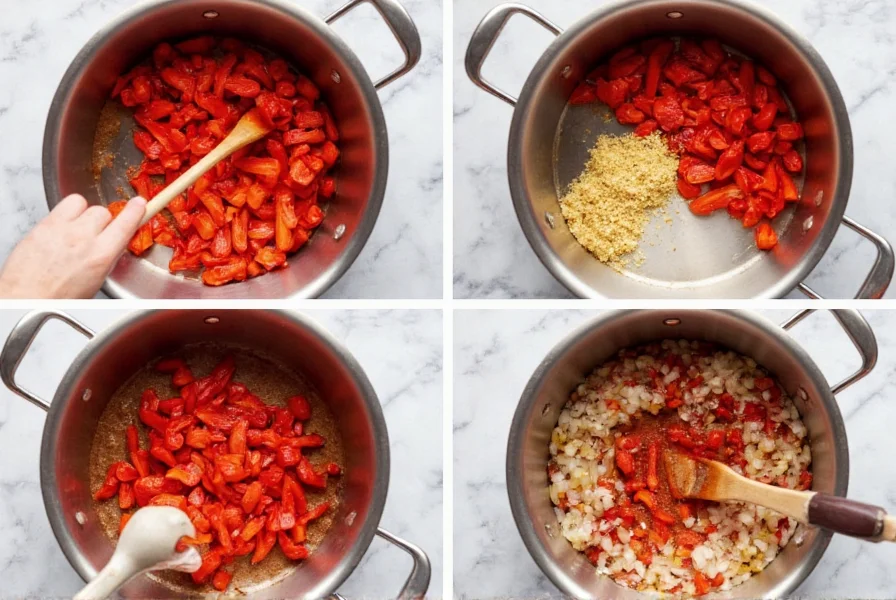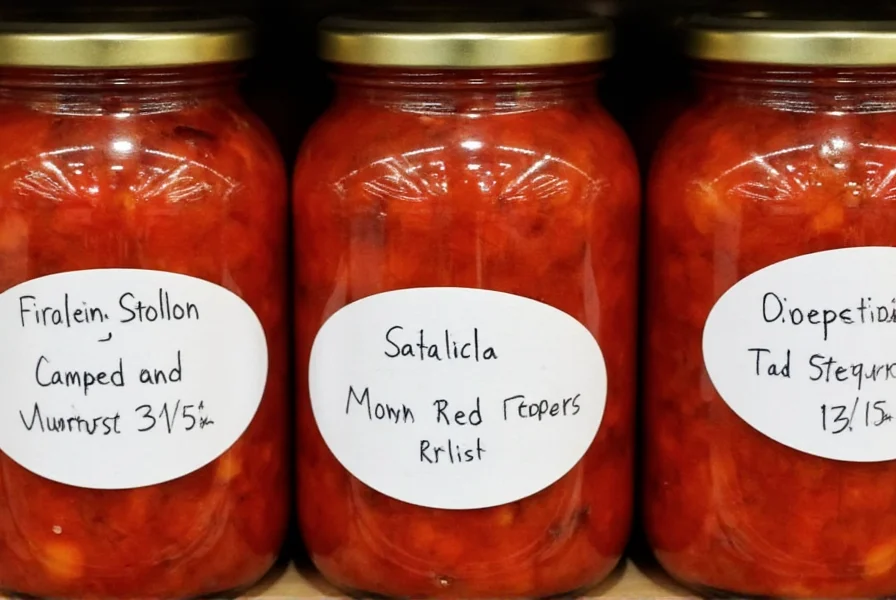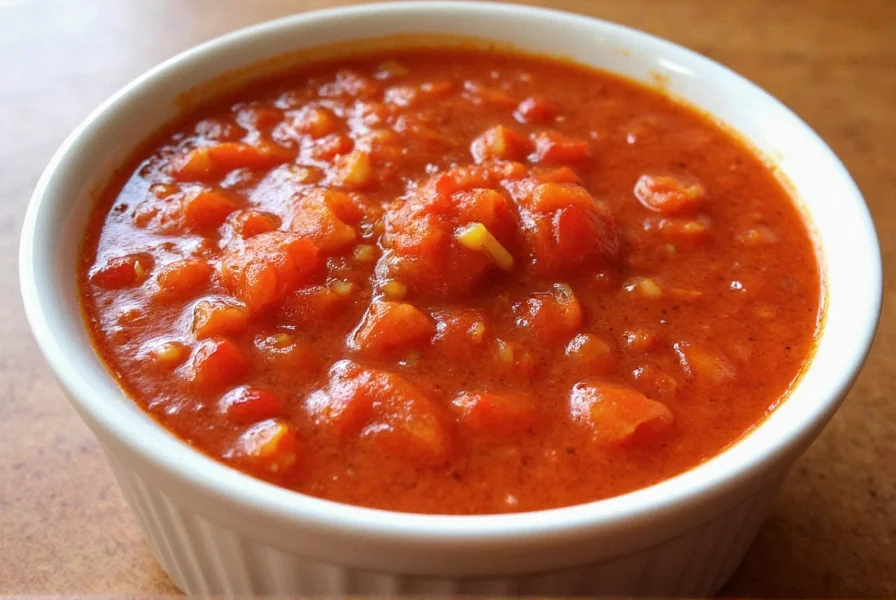Creating exceptional red pepper relish starts with selecting the right ingredients and understanding the preparation techniques that maximize flavor development. Unlike basic chopped pepper mixtures, authentic red pepper relish undergoes a cooking process that melds flavors while preserving the distinctive sweet-heat balance that makes this condiment so versatile in culinary applications.
The Essential Components of Quality Red Pepper Relish
Professional chefs and home cooks agree that the foundation of outstanding red pepper relish begins with three critical elements: pepper selection, acid balance, and proper cooking technique. Red bell peppers should be fully ripe for maximum sweetness, ideally roasted to develop complex caramelized notes before incorporation. The vinegar-to-sugar ratio requires careful calibration—too much acid overwhelms the pepper's natural sweetness, while excessive sugar creates cloying results.

Traditional Preparation Method
Follow this professional approach for restaurant-quality red pepper relish at home. Begin by roasting 2 pounds of red bell peppers over open flame or under a broiler until charred, then steam in a covered bowl for 15 minutes before peeling. Finely dice the roasted peppers along with 1 cup of yellow onion and 3 garlic cloves. Combine in a non-reactive pot with 1 cup apple cider vinegar, ¾ cup sugar, 1 teaspoon mustard seeds, ½ teaspoon celery seeds, and 1 teaspoon salt.
Simmer uncovered for 35-45 minutes until thickened to your preferred consistency, stirring occasionally to prevent sticking. The relish should coat the back of a spoon when properly cooked. For food safety and optimal flavor development, process in a boiling water bath for 15 minutes if canning, or cool completely before refrigerating.
| Red Pepper Relish Variations | Key Modifications | Best Pairings |
|---|---|---|
| Classic Sweet-Tangy | 1:1 vinegar to sugar ratio | Bratwurst, turkey sandwiches |
| Spicy Chipotle | Add 1-2 minced chipotles in adobo | Burgers, grilled chicken |
| Mediterranean Herb | Add 2 tbsp fresh oregano & lemon zest | Grilled fish, lamb chops |
| Smoky Maple | Replace sugar with pure maple syrup | Pork tenderloin, breakfast sandwiches |
Storage Guidelines for Maximum Freshness
Proper storage determines both the safety and flavor longevity of your homemade red pepper relish. Refrigerated relish in airtight containers maintains peak quality for 3-4 weeks. For extended preservation, process filled jars in a boiling water bath for 15 minutes to create a vacuum seal. Properly canned red pepper relish remains safe for 12-18 months when stored in a cool, dark place. Always use clean utensils when serving to prevent contamination, and refrigerate immediately after opening canned versions.

Culinary Applications Beyond the Obvious
While many home cooks limit red pepper relish to hot dogs and hamburgers, professional chefs utilize this versatile condiment in sophisticated applications. Stir a tablespoon into tuna or chicken salad for added dimension. Use as a glaze component for roasted vegetables or proteins by mixing with equal parts Dijon mustard. Incorporate into deviled egg filling for a sweet-heat surprise. The acidity cuts through rich dishes beautifully—try a dollop atop creamy polenta or macaroni and cheese. For unexpected breakfast applications, spread on English muffins before adding eggs for elevated breakfast sandwiches.
Troubleshooting Common Preparation Issues
Watery relish typically results from insufficient cooking time or inadequate vinegar concentration. Return thin relish to the stove for additional simmering until thickened. If your relish tastes overly acidic, balance with small increments of honey rather than additional sugar for better flavor integration. Bitter notes usually indicate over-charred peppers during roasting—peel thoroughly and consider reducing roasting time next batch. For relish that's become too sweet, a splash of additional vinegar tempered with a pinch of salt often restores balance.
Frequently Asked Questions
Can I use jarred roasted red peppers for homemade red pepper relish?
Yes, you can substitute jarred roasted red peppers, but drain them thoroughly and reduce added liquid in your recipe by 25% to compensate for excess moisture. Fresh-roasted peppers provide superior flavor complexity, but quality jarred versions offer convenience with acceptable results.
Why does my red pepper relish separate after refrigeration?
Separation occurs when the relish hasn't been cooked sufficiently to properly emulsify ingredients. Return to low heat and simmer 5-10 minutes longer while stirring constantly. Adding 1 teaspoon of cornstarch slurry (mixed with cold water) can help stabilize the mixture if separation persists.
How can I adjust red pepper relish for low-sugar diets?
Reduce sugar to ½ cup and add 2 tablespoons of grated apple for natural sweetness. For sugar-free versions, use a monk fruit sweetener designed for cooking, but add it after cooking to preserve flavor. Note that sugar plays a preservation role, so low-sugar versions require strict refrigeration and shorter consumption timelines.
What's the difference between red pepper relish and pimento relish?
Traditional pimento relish uses small, sweet pimento peppers and often includes green peppers, creating a milder, less complex flavor profile. Red pepper relish specifically features roasted red bell peppers, delivering deeper caramelized notes and a more pronounced sweet-tangy balance with greater versatility in savory applications.
Can I freeze homemade red pepper relish?
Yes, freeze in airtight containers with ½ inch headspace for expansion. Thaw overnight in the refrigerator before use. Texture may soften slightly after freezing, but flavor remains excellent for up to 12 months. Freezing preserves quality longer than refrigeration but not as long as proper canning.











 浙公网安备
33010002000092号
浙公网安备
33010002000092号 浙B2-20120091-4
浙B2-20120091-4